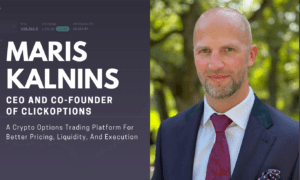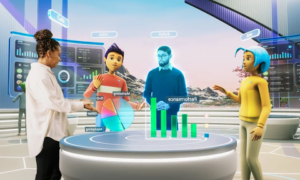Global technology executives face what may seem insurmountable challenges as technology leadership evolves. These challenges include sustaining agility, collaboration, communication, and project alignment with remote teams, coordinating training, and maintaining sustainability while driving innovation and continuous improvement.
Yogesh Ramaswamy has over 13 years of experience as a senior developer and production engineer. He has a proven track record in driving technological innovations, optimizing operations, and efficiently managing large-scale, complex projects. He is also an expert at harnessing cutting-edge technologies to automate build, integration, and deployment processes, ensuring accuracy and efficiency. Yogesh recognizes the significant impact of technology leadership on global enterprises, the role and benefits of the DevOps framework as a tool for technology leaders, and strategies for project alignment in remote teams.
Q: What is the impact of technology leadership on global enterprises?
Ramaswamy: The rapid adoption of artificial intelligence (AI) and machine learning (ML) technologies is revolutionizing business. The speed at which these technologies progress presents a seemingly impossible challenge for technology leaders. And it’s not just AI or ML. Methodologies such as DevOps and Agile tools are upending business practices as well. Technology leaders can have a significant impact as they manage successful transitions using these methodologies to streamline communication and stay one step ahead of technological evolution.
Microsoft and Spotify are examples of organizations that have experienced successful transitions by improving communication and team building across a global workforce. Microsoft understands the need for an organization to transform itself in an international environment. This realization led to the adoption of a single business intelligence reporting system. The Microsoft solution acknowledges the need to streamline business practices by avoiding duplication and sharing the same information across multiple teams. The model adopted by Spotify also focuses on cross-functional teams, an absolute necessity in global business. Using Agile methodologies, Spotify has organized teams known as “squads” and “tribes” to promote continuous improvement, experimentation, and learning.
Q: What unique challenges do tech leaders face when articulating visionary strategies and earning buy-in from all organizational and stakeholder levels?
Ramaswamy: While technology leaders are running to stay ahead of constant change and implement new methodologies, it’s also critical for them to ensure their employees understand and take personal ownership of the changes. The primary strategy to accomplish this is through clear and transparent communication. Technology leaders who are good communicators can articulate the advantages of change clearly. Employees respond more positively when a reason is given for a change and when the reason makes practical sense. Microsoft’s shift of focus to cloud computing is the gold standard example of a technology leader, in this case, CEO Satya Nadella, who has a vision and successfully implements that vision through clear communication. Nadella understands that implementing new methodologies also means affecting real and lasting change in company culture.
Another example is Yahoo. It earns buy-in through its professional development program, a structured program committed to “making awesome DevOps engineers.” Teams work together to select training topics, which can range from learning to play the ukelele to developing soft skills or completing certification programs. Every Friday, team members participate in 60- to 90-minute sessions, each of which features a different presenter from the group. This initiative is more comprehensive and immersive than a typical staff training or in-service day and is structured to ensure that employees are updated with the latest skills and knowledge and motivated to embrace and implement new ideas and practices within their roles.
Q: What strategies do successful technology leaders use to ensure project alignment among geographically dispersed teams?
Ramaswamy: Advancing technology has provided technology leaders with several tools that can be used strategically to communicate globally. Tools like Slack, Microsoft Teams, and Zoom are ubiquitous and have excellent functionality for communicating face-to-face and bringing together employees from anywhere in the world. Powerful project management tools such as Airtable, Slack, and Jira can streamline tasks among disparate teams that were formally siloed and separated from the rest of the company.
Transparent documentation is essential in this new business reality. Transparency means that everyone has access to the same information. Technology leaders now have the tools to ensure that documents, knowledge, and information are available to all employees in the organization. These tools allow everyone to be on the “same page.” Google Drive is one example. It facilitates collaboration on documents in real-time, and everyone can see and contribute to the most current versions of documents. Tools like Atllasian’s Confluence have revolutionized the ability to break down silos end encourage transparency and collaboration. Confluence advertises itself as “your team’s knowledge all in one place.”
Q: Why is a DevOps framework such a popular and valuable methodology?
Ramaswamy: Multiple management methodologies provide a framework for team building, continuous improvement, and collaboration. The DevOps approach is certainly one of the most utilized. DevOps improves teamwork, reduces misunderstandings, and fosters a collaborative culture. DevOps methodologies focus on the vitally important issues of collaboration, continuous integration, and deployment in global business. DevOps is particularly useful in software development. DevOps encourages continuous integration/continuous delivery (CI/CD) of software updates since it is preferable to update continuously and reliably rather than roll out more infrequent major updates prone to bugs that annoy customers and then need to be fixed. The principles of DevOps can be adapted to other aspects of technology leadership and ultimately have a positive impact on customer satisfaction.

Q: What skills and characteristics will tech leaders need to drive success now and in the future?
Ramaswamy: To succeed now and in the future, it’s critical for technology leaders to focus on customers. A customer-centric approach aligns products with customer needs to enhance user satisfaction and loyalty and propel competitiveness and innovation. Additionally, leaders need to consider how they can strategically diversify their businesses. Strategic diversification reduces risk and taps into new growth areas to guarantee resilience against market fluctuations. Finally, it’s essential that companies introduce sustainable practices to the operations. Sustainable practices ensure regulatory compliance and improve brand reputation and long-term viability. These improvements will enable tech leaders to navigate rapid industry changes, achieve sustained success, and position their organizations to respond to future challenges and opportunities.
The keys to being an outstanding global technology leader
It’s imperative that today’s global technology leader drives technological innovations and optimizes operations to manage large-scale, complex projects efficiently. Strategic and effective use of the many tools available and emulating the examples of companies that have successfully managed technological evolution are the keys to being an outstanding leader.
About the Author:
Tim Wadham is an educator, author, and freelance writer. Connect with Tim on LinkedIn.



































